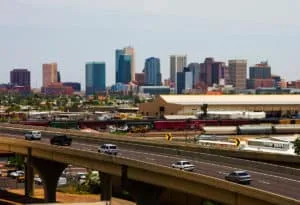 Imagine if every person in Phoenix, Tucson and Scottsdale took to the road drunk — 2.3 million people, each under the influence of alcohol. It would be a pretty horrific scenario.
Imagine if every person in Phoenix, Tucson and Scottsdale took to the road drunk — 2.3 million people, each under the influence of alcohol. It would be a pretty horrific scenario.
It isn’t going to happen, but it almost happened, in a way, in slow motion. Over the past 10 years 2.3 million people tried to start their cars and trucks, and were stopped because their ignition interlock kept the ignition off. The device wouldn’t let them drive under the influence.
Ignition interlocks, or car breathalyzers, prevent a vehicle from starting if the driver has been drinking.
2.3 million is a lot of people – the entire population of the aforementioned three cities. They were spread out over 50 states and 10 years, so you don’t have to worry about swerving cars knocking over the Barry Goldwater Memorial or clipping the pillars of the Gammage Auditorium.
But it’s an enormous number of drunk drivers, many of whom would have done damage to themselves or other people. The only line of defense for society was the ignition interlock, and it worked. The data is revealed in a new report from Mothers Against Drunk Driving (MADD).
The idea of totaling up all the successful interventions by the device is to point up the effectiveness of ignition interlocks in saving lives. The widespread problem of drunk driving in America has generated a lot of debate but few solutions that work. Interlocks are a proven solution, most effective when mandated for all DUI offenses, including first offenses.
MADD promotes five measures to combat drunk driving:
- Ignition interlocks for all drunk driving offenderse
- Sobriety checkpoints
- ALR (Administrative License Revocation) for all offenders immediately upon arrest
- Child endangerment laws, imposing more severe punishments on drunk drivers who have a minor as a passenger
- No refusal laws, which impose penalties for anyone refusing a breath test
More than twenty states have yet to pass an all-offender ignition interlock law. Is it important that they do? Think of those 2.3 million instances of drunk driving that never happened, and how many more might not happen if those interlocks are in place. We could be looking at the population of LA or New York in a few years.
That’s a lot of people. Let’s help them not drive drunk, all right?
